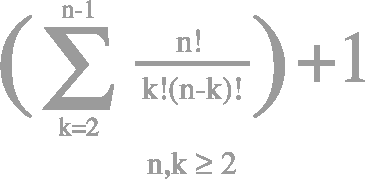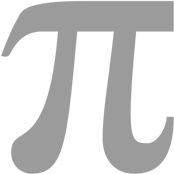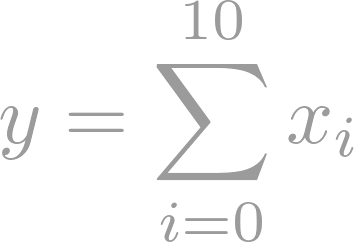










COURSE NAME AND CODE: Introductory Linear Algebra and Analytic Geometry (MATH 1141)
LEVEL: I
SEMESTER: I
NUMBER OF CREDITS: 3
PREREQUISITES: CAPE Pure Mathematics or GCE A-Level Mathematics, or M08B/MATH0100 and M08C/MATH0110, or equivalent
RATIONALE:
Motivated by the geometry of two and three dimensions, linear algebra is the simplest context in which a theory of great beauty and utility can be developed. Linear algebra forms the basis for all application of discrete mathematics, whereas analytical geometry is the study of spatial relationships. These two disciplines combined, form the fundamentals needed to study linear systems, linear operators, coordinate systems, and differential geometry and all these topics have a wide range of applications in mathematics as well as computer science, physics and engineering. A clear understanding of the concepts of linear algebra is central to the understanding of all mathematical and physical phenomena in higher dimensions; and the algorithms of linear algebra are at the heart of much of scientific computing. Finally, a first course in linear algebra also serves as an introduction to the development of logical structure, deductive reasoning, and mathematics as a language. For many students, the tools of linear algebra will be as fundamental in their professional work as the tools of calculus. Last but not least Larry and Sergey would not have created Google if they did not know linear algebra.
COURSE DESCRIPTION:
This is a Level I compulsory course for majors in Mathematics, Physics, Engineering, and Computing. This course could be very helpful for all students in the Faculty of the Pure and Applied Science. The goal of this course is to give students the basic knowledge of linear algebra, analytic geometry and revise some fundamental concepts about the functions of one variable. This will enable students to increase their proficiency when studying calculus courses, including functions of several variables, and/or other physics and engineering courses.
CONTENT:
Matrices – Systems of Linear Equations - Vector Geometry - Functions.
OBJECTIVES:
At the end of the course, students will be able to:
• Demonstrate comprehension of operations on matrices and to perform elementary operations on matrices; the determinant, inverse and transpose of a matrix.
• Solve systems of linear equations by applying the Gauss-Jordan elimination algorithm, Cramer’s rule, or the Inverse Matrix method.
• Recognize consistent, inconsistent and over determined systems, and discuss their solutions.
• Perform vector operations, determine whether a two operation set is a vector space, recognize vector spaces and determine whether two vectors are orthogonal, parallel, or neither by using dot and cross products;
• Construct different expressions for the equations of the straight lines on the Euclidean plane and in the three-dimensional Euclidean space, express the equation of a plane in different forms and solve problems related to the intersection of straight lines and planes;
• Demonstrate familiarity with elementary functions; find the inverse of a single variable function; draw the graphs of elementary functions; and do elementary transformations of the graphs;
SYLLABUS
Functions: [2 hours]
Definition, inverse function, graphs of some elementary functions and elementary transformations of the graphs.
Systems of linear equations: [6 hours]
Linear equations in two unknowns and discussion of consistent, inconsistent and over determined systems; m equations in n unknowns: Gauss-Jordan elimination algorithm and the necessity of introducing the concept of a matrix; coefficients matrix, augmented matrix, elementary row operations and the row echelon form; discussion of consistent, inconsistent and over determined systems; homogeneous systems of equations; row and column vectors.
Matrices: [10 hours]
Formal definition of a matrix, matrix equations; elementary matrix operations: sum, scalar multiplication, dot product, matrix multiplication in terms of dot products, properties of matrix multiplication, matrix multiplication as a linear combination of the columns of the first matrix, summation notation; inverse of a square matrix, algorithm for the computation of the inverse, solution of linear systems in matrix notation, transpose of a matrix, symmetric matrices; determinants: determinants of 2x2 and its geometric interpretation, determinants of 3x3 matrices, the determinant of an n x n matrix as an expansion of its cofactors, properties of the determinant, determinant and inverse matrices, formula for the inverse of a matrix in terms of its adjoint matrix; Cramer’s rule and linear systems of equations;
Vector Geometry: [6 hours]
Vectors in the Euclidean plane, geometric and algebraic definitions of a vector, triangle inequality, unit vectors, trigonometric representation of a unit vector, dot product and projections, characterization of parallel and orthogonal vectors; vectors in the three-dimensional Euclidean space, Cartesian coordinates, distance between two points, vectors, unit vectors, cosine directors, dot product and characterization of parallel and orthogonal vectors, projections, cross product and its properties, geometric interpretation and its connection with the determinant of a 3x3 matrix, formula of the volume of a parallelepiped described by three vectors; lines and planes: vectorial and parametric equations of a line, Cartesian equation of a plane, parallel planes, intersections.
Tutorials: [12 hours]
Lab : [10 hours] Problem solving and simulations.
TEACHING METHODOLOGY
This course will be delivered by a combination of interactive lectures and participative tutorials. The total estimated 41 contact hours are broken down as follows: 24 hours of lectures, 12 hours of tutorials and 10 hours of lab (counts as 5 contact hours). The course material will be posted on the webpage
http://ourvle.mona.uwi.edu/
Practice problems and assignments will also be available to students via this webpage, as well as the solutions to the assignment questions after the due date.
ASSESSMENT
The course assessment will be divided into two components: a coursework component worth 30% and a final exam worth 70%.
• Two course work exams will take place during weeks 5 and 9. Each will be worth 15% of the student’s final grade.
• The final exam will be two hours in length and consist of compulsory questions.
REFERENCE MATERIAL:
Books:
1. Stanley I. Grossman: Elementary linear algebra with applications, McGraw-Hill, 5th Edition, 2007
• Intended for the first course in linear algebra, this widely used text balances mathematical techniques and mathematical proofs. It presents theory in small steps and provides more examples and exercises involving computations than competing texts.
2. H. Anton: Elementary Linear Algebra, Von Hoffman Press, 8th Edition, 2000.
• Anton's approach is to introduce the notation and basic tools, i.e. vector and matrix arithmetic, within the intuitive geometric settings of the Euclidean plane and space. Difficult concepts are visited again and again in increasing levels of abstraction, easing students into them. The writing style is clear and the exercises are well-chosen.
3. S. Lang: Linear Algebra, Springer Undergraduate Texts in Mathematics, 3rd Edition Prentice Hall, 8th Edition, 1987.
• This book is an excellent introduction to Linear Algebra for mathematics students. Its conciseness may leave some students adrift, but it serves to enhance the book's structural coherence. Even if the given proofs are usually terse, this makes the book a wonderful way to measure one's preparedness for upper level studies.
4. S. Lang: A first course in Calculus, Springer Undergraduate Texts in Mathematics, 5th
Edition, 2005
• Serge Lang's text teaches the skills needed to solve challenging calculus problems, while teaching to think mathematically. The text is principally concerned with how to solve calculus problems. Key concepts are explained clearly. Methods of solution are effectively demonstrated through examples. The challenging exercises reinforce the concepts, while enabling to develop the skills required for solving hard problems. Answers to the majority of exercises (not just the odd-numbered ones) are provided in a hundred page appendix.
Online Resources:
http://ocw.mit.edu/OcwWeb/Mathematics/18-06Spring-2005/VideoLectures/ - These video lectures of Professor Gilbert Strang teaching Linear Algebra at MIT were recorded in fall 1999.
http://aix1.uottawa.ca/~jkhoury/socio.htm - This link provides many applications of Linear Algebra in Chemistry, Physics, Genetics, Sociology, and etc.